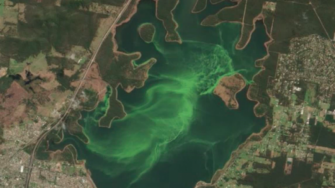Chemical Engineering | Civil and Environmental Engineering

Ongoing research project to determine the relationship between algal populations and routinely-measured environmental and water quality parameters in drinking water reservoirs and wastewater lagoons. This project will develop comprehensive models to predict the likelihood of algal blooms under different scenarios, which can be used for risk management and decision-making.
Seasonal algal blooms are common in drinking water reservoirs and (especially) in wastewater lagoons. These blooms can produce toxins and taste/odour compounds, clog water filters and reduce aesthetic value. Various mechanistic and empirical models have been developed to assess the likelihood of algal blooms, but their predictive power remains low and their usefulness for water management decisions is limited.
We have identified the following areas for improvement: constrain model complexity, introduce sensitivity to temporal effects and better communicate uncertainty.
2020-TBC
- Focused Research Questions
- Researchers
- Partners
- What are the multivariate relationships between algal populations and environmental/water quality parameters?
- What are the key drivers of algal blooms and which additional parameters need to be measured to improve predictive power?
- How do we incorporate the role of time lags and causality into our models?
- Should model uncertainty be represented by frequentist or Bayesian statistics?
University of New South Wales | University of Technology Sydney | Hunter Water | Melbourne Water



